Trafalgar Terrace, the handsome line of grand stucco houses built as Monkstown was expanding in the 1840s, has seen countless changes in its time. The most recent was just this summer, when the layout of the road to the front was improved to include two cycle lanes, and so last Saturday when the sun came out the car traffic there – now restricted to a single lane and one-way heading into the city – was sparse, while family groups of cyclists pedalled by and hardy swimmers made their way up from Seapoint.
The sea-facing Trafalgar Terrace is a cul-de-sac, set high from the road behind railings and with parking and a strip of lawn to the front, its neatness suggesting a collective community spirit among the residents.
The houses vary in size – though none could be called small – depending on whether they have a return or if they are two, three or even four storeys in height over roomy basements.
Number 21 is one of the larger houses, coming in at 510sq m (5,490sq ft) – the size of a substantial country house and notably big for a terraced house. The houses on Trafalgar enjoy uninterrupted sea views on all levels, a major selling point in a property with easy access to the city.
On other nearby period terraces many of the vast houses were, during the 20th century, carved up into bedsits and flats, with the loss of original features. That process was rare on Trafalgar Terrace, with most of the houses staying as single family homes, and number 21 had a valuable custodian in conservation architect Chris Southgate and his wife Susan, who during their years there restored it to a meticulous standard.
Mr Southgate was said to be particularly proud of the highly decorative and intricate plaster cornices and mouldings in the first-floor reception rooms, which he reckoned to be among the finest of their period in Dublin.
Other original details abound, including superb marble chimney-pieces in several rooms, newly restored six-over-six paned windows and working shutters, matt varnished floorboards and a fine encaustic tile floor in the entrance hall.
Use of space
The current owners moved in in 2001 when their three children were very young, and they live in the house largely as was intended, using the fine interconnecting rooms on the first floor as their living- and formal diningroom. The marble chimney-piece, particularly if it has a roaring fire, is usually the focus in rooms of this period. But here the eye is drawn to the sea view out towards Howth from the pair of tall sash windows. The rust-coloured walls in the rear diningroom were given a rag roll paint treatment in the 1990s – a look that hasn't stood the style test of time.
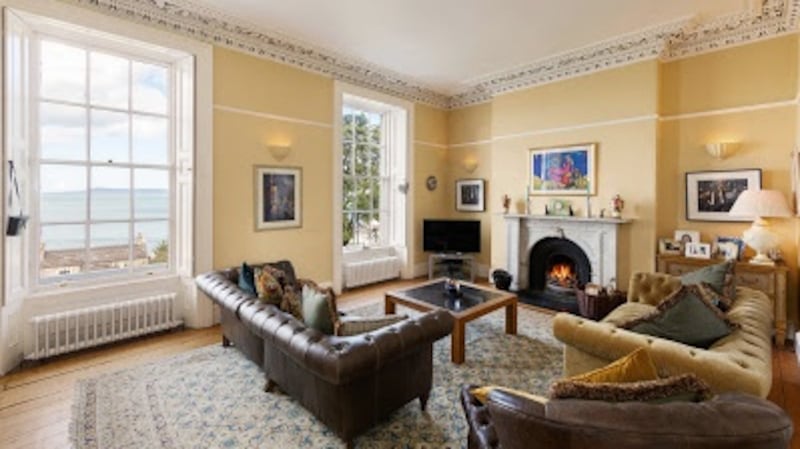
The two interconnecting rooms at hall level are used differently – the front room is a home office with units fitted by Oakline (which was commissioned also to fit wardrobes in several rooms), while the back room, used by previous occupants as a recording studio, is an informal livingroom.
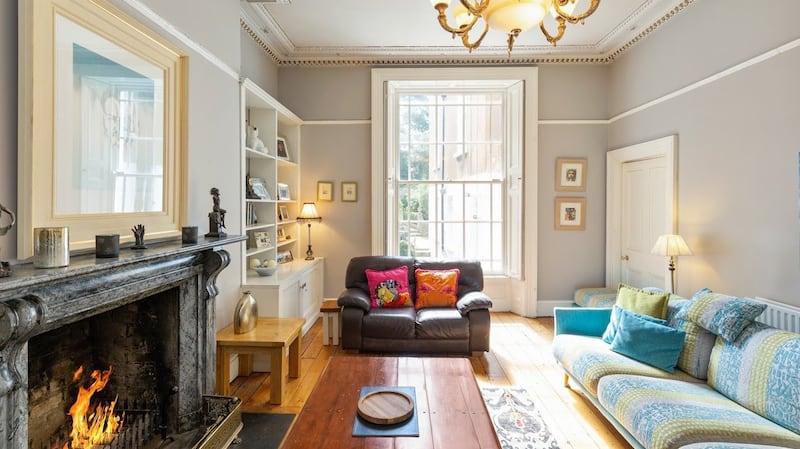
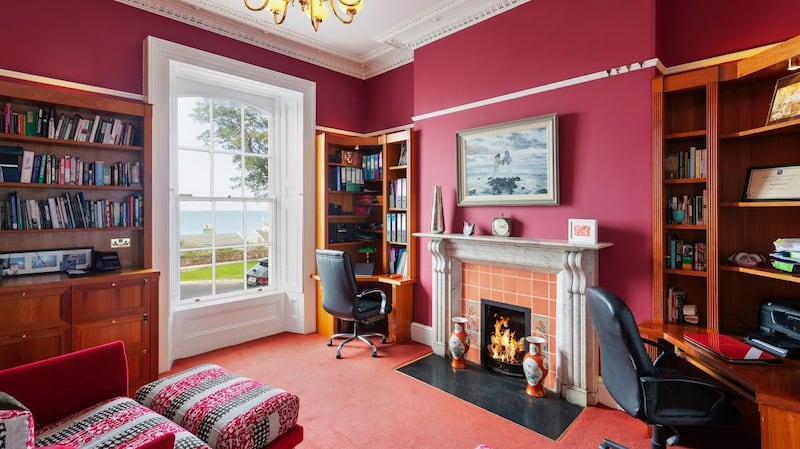
A rear hallway leads to a large room, which with its two windows and fireplace feels wasted in its use as a utility and general store, especially given that it opens via double doors to a lovely patio. This could be a playroom or even a kitchen.
The next return up has a handsome bathroom with a free-standing bath, and – unusually – a mirrored cupboard that hides a false door leading through to a guest bedroom with a solid fuel stove in one corner.
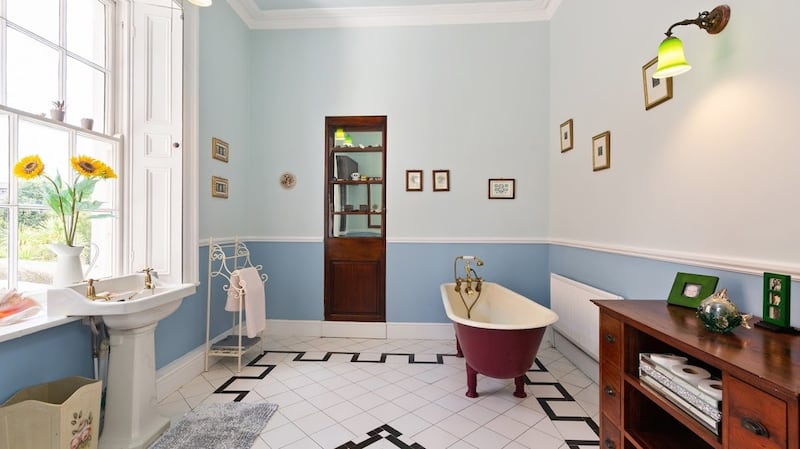

There is a sunny bedroom on the next return on the climb towards the two second-floor bedrooms. The bathroom on the next return has a free-standing bath and a triple-size walk-in shower.
At the top of the house – on the fourth floor concealed behind the parapet – is a large bedroom and a tiny box room that could be converted to a bathroom.
Basement access
Unusually for this terrace – and for most houses of the period – there is no access to the basement level of number 21 from the front. (It must have existed at one time – how else could the team of servants have gained access?) And so, subject to planning, it probably could be reinstated by new owners, who will be decorating and doing some updating anyway.
Down in the basement to the rear is a large pantry, a showerroom and a walk-in cellar with original brick wine-bins. The kitchen is also down here to the rear; it was recently fitted with caramel-coloured glossy contemporary units. The room to the front at basement level is a gym – which the owners say was a boon for the family during lockdown.

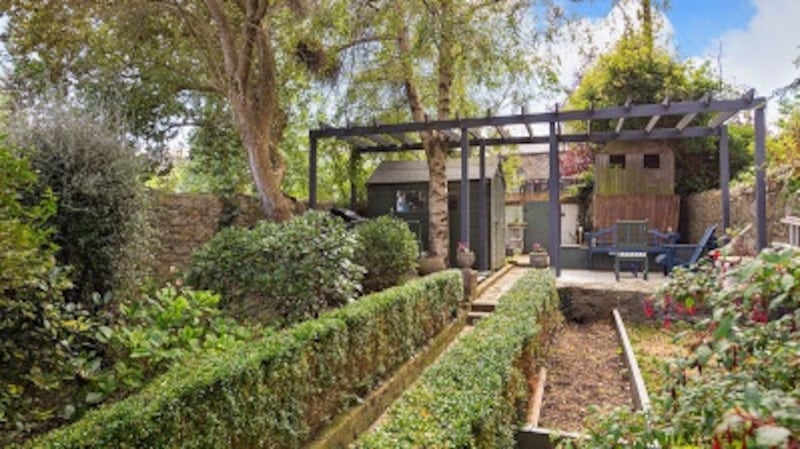
The rear garden is about 30m long – the original brick stables went many decades ago – and was very smartly landscaped by previous owners in a formal style with tall raised beds, a fountain, paths with reclaimed brick, and box-edged borders. At the end of the narrow garden is a sheltered barbecue area.
21 Trafalgar Terrace is now seeking €3.45m through agent Sherry FitzGerald. This is the third time it has been on the market in 30 years, each time with eye-watering price jumps. In September 1993, the estate agents were confident it would fetch “over £200,000”. It subsequently made £262,000 under the hammer, which, at the time, was considered a strong price.
In 2001, in what was described as a jittery market, the property came on the market seeking £1.35 million, at which time the current owners – now downsizing in the neighbourhood – bought it. Now it is being sold through Sherry FitzGerald, asking €3.45 million.











